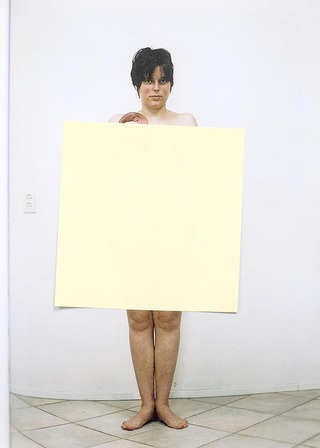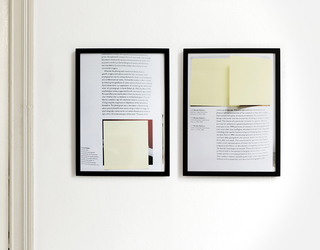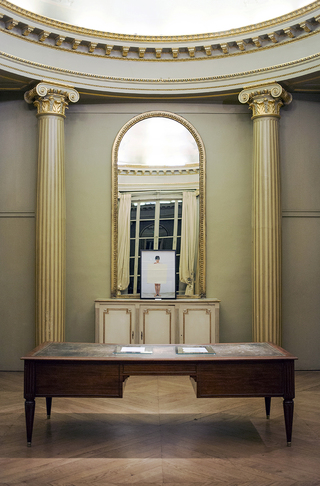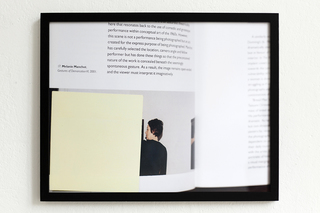Martina della Valle
POST-IT BOOK
EDITIONS
check the limited edition under:




© martinadellavalle
Martina della Valle martidv@gmail.com
Upon return from a trip, I found a lost - or abandoned - book on the Milan-Malpensa Airport bus. It is a well-known edition on contemporary photography. On page 26 a yellow Post-It hides the image nr. 17 concealing half of the naked female body portrait. The same treatment is reserved for all the nude representations contained in the book.
The fortuitous encounter with publication in a place where people pass without leaving a trace has opened many questions related to the origin of this "censored" book which I keep with the intervention of the unknown reader still intact.
How is the perception of an image altered when some parts are meticulously hidden? How subjective is the selection of rejected images? Do we need an explicit means of obscuring what we don't want or can’t consider? What becomes of the original intent if I reproduce the partially covered images, amplify the removal of the uncomfortable subject or focus the attention of the viewer’s eyes on the hidden bodies?
The POST-IT BOOK project develops as a series of photographic reproductions of details of the pages on which the reader intervened to partially obscure the subjects. This documentation is also collected in a limited edition photo book.
Al ritorno da un viaggio, ho trovato un libro smarrito - o abbandonato - sul bus Milano-Malpensa Aeroporto. Si tratta di una nota edizione sulla fotografia contemporanea. A pagina 26 un Post-It giallo nasconde l'immagine nr. 17 celando metà del corpo nudo femminile ritratto. Lo stesso trattamento è riservato a tutte le rappresentazioni di nudo contenute nel libro.
L'incontro fortuito con la pubblicazione in un luogo in cui le persone passano senza lasciar traccia ha aperto molte domande legate all'origine di questo libro "censurato" che conservo con l'intervento del lettore sconosciuto ancora intatto.
Come si altera la percezione di un'immagine quando se ne nascondono meticolosamente alcune parti? Quanto è soggettiva la selezione delle immagini rifiutate? Serve un mezzo esplicito per oscurare quello che non vogliamo o possiamo considerare? Cosa diviene dell'intento originale se riproduco le immagini parzialmente coperte, amplifico la rimozione del soggetto scomodo o focalizzo l'attenzione di occhi terzi verso i corpi nascosti?
Il progetto POST-IT BOOK si sviluppa come una serie di riproduzioni fotografiche di dettagli delle pagine su cui il lettore è intervenuto per oscurare parzialmente i soggetti. Questa documentazione è inoltre raccolta in un quaderno fotografico in edizione limitata.
2014
- inkjet print on fine art paper 50x70cm,
ed. 1/5
- inkjet print on fine art paper 35x50cm,
ed. 1/5
- Photo-edition
A5, 16 pages + A2 poster
Limited edition: 50 copies
Presented at
- Fotografie Forum, Frankfurt (G)
- Italian Cultural Institute, Paris (F)
- UNSEEN Photo Fair, Amsterdam (NL)
- Gall. METRONOM, Modena (IT)
Jury Special Mention Premio Francesco Fabbri 2015
THE POST-IT BOOK
JavaScript is turned off.
Please enable JavaScript to view this site properly.